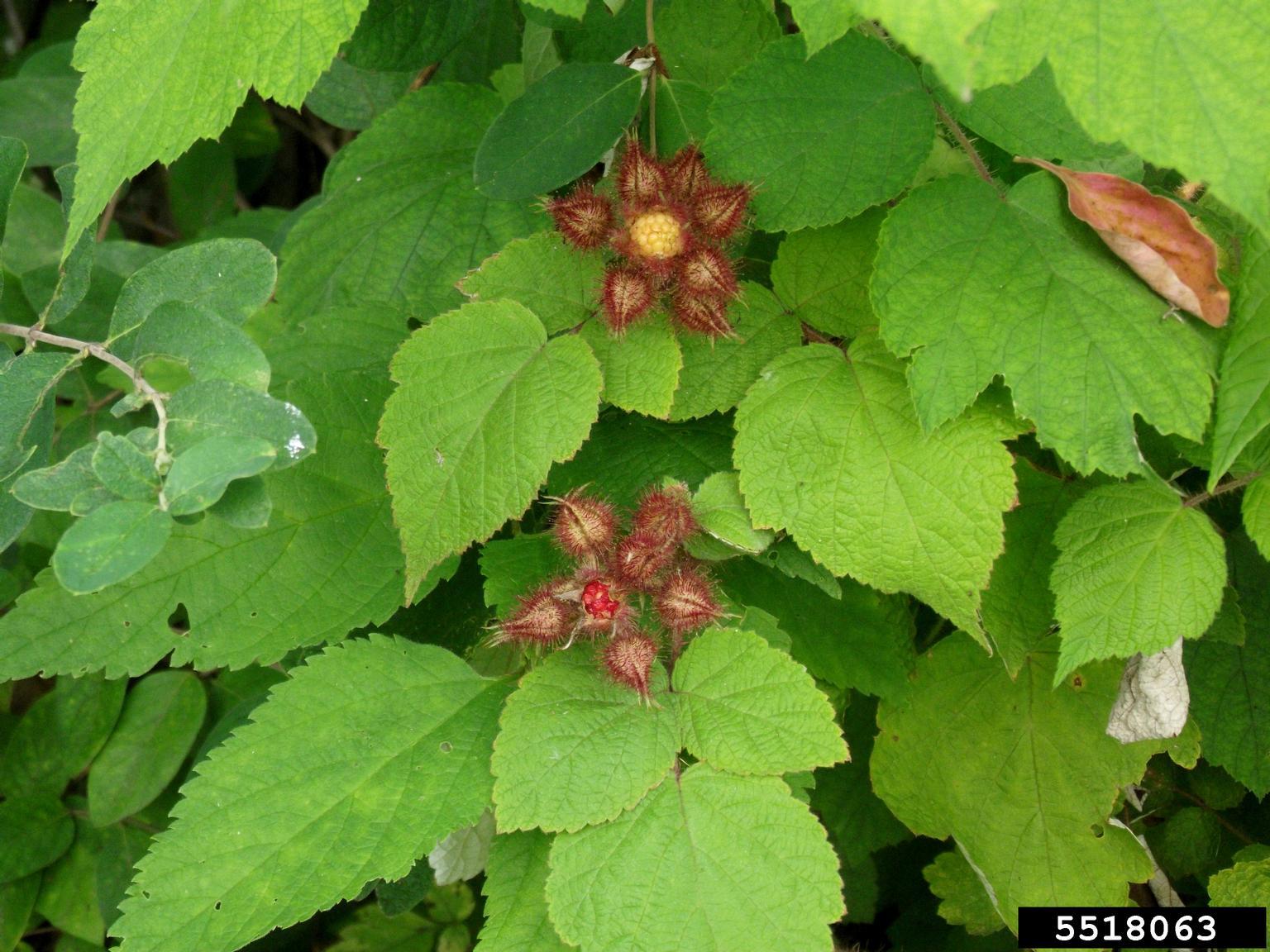About Japanese wineberry or wine raspberry (Rubus phoenicolasius)
Life cycle
Deciduous, woody shrub
Growth habit
Arching stems reach 3 to 6 ft. that can root at the tips; stems and petioles covered in dense reddish glandular hairs and prickles; leaves alternate, divided into three leaflets, broadly ovate with pointed tips, serrated margins, undersides with dense white hairs
Reproduction
seeds, root sprouts, rhizomes, and stems that root where tips touch the ground; flowers have 5 white petals and produce a red raspberry-like fruit



